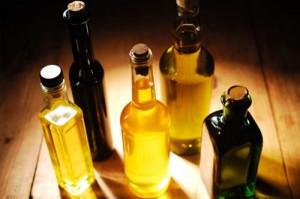
More evidence that low-calorie sweeteners are bad for your health
Studies show that artificial sweeteners can raise the risk of hypertension, metabolic syndrome, type 2 diabetes and heart disease, including stroke.

Forget your fat phobia. Increasing your intake of healthy fats is vital to maintaining good all-round health.
Good fats can help leach toxins out of your system, prevent inflammation and protect the gut from toxic damage.
While most of us now understand that essential fats are important for health, making sense of them can be difficult. The world of essential fats is like a jumbled alphabet soup of EFAs, ALAs, EPAs and DHAs. Summing it up simply is impossible but, in general, there are two main ‘families’ of essential fatty acids: omega-6 and omega-3.
Omega-3 and -6
In each family of EFAs, there is a particularly important acid: in the omega-6 family, it is linoleic acid, or LA. This is converted in the body to gamma-linolenic acid (GLA) and later into the series 1 and 2 prostaglandins that, in too high quantities, can have a deleterious effect on health.
In the omega-3 family, alpha-linolenic acid, or LNA, is the most important. In the body, this is converted to eicosapentaenoic acid (EPA). EPA can also be synthesised in the body from docosahexaenoic acid (DHA). EPA and DHA help keep our arteries clean and our platelets less sticky.
EPA is the starting material for making series 3 prostaglandins, which have beneficial effects on blood pressure, cholesterol and blood-fat levels as well as kidney function, the inflammatory response and immune function. Too much or too little of these prostaglandins can leave the body unable to cope with illness.
Getting the balance right
Generally speaking, we get far too much omega-6s and not nearly enough omega-3s. In a healthy diet, the ratio of omega-6 to omega-3 should be 2:1 (though the healthy range can be anywhere from 1:1 to 5:1).
According to fats expert Udo Erasmus, including more of these healthy fats in our diet while avoiding trans fats may encourage the body to lose weight (a good way to also lose stored toxins). In his experience, those who take 45–70 mL of mixed omega-3 and omega-6 fatty acids (the equivalent of 3–5 American-sized tablespoons, 4–7 UK dessertspoons or 2–3 UK tablespoons) will consistently lose weight even if they don’t alter their diets.
He adds, however, that the results will be better if the EFAs are part of a comprehensive diet regime that includes increasing your intake of greens, cutting down on saturated fats, switching to organic foods wherever possible, and supplementing with digestive enzymes.
We can make some EFA’s ourselves
Humans can manufacture the fatty acids DHA and EPA from red and brown algae in much the same way that fish do.
Given that fish oils can spoil quickly and are subject to wide variations in quality, supplementing with algae might be worth considering. Vegetarians, for instance, have been shown to substantially increase their levels of DHA and EPA with algae supplements.
But take note that vegetarians – for a variety of reasons not all linked to diet – are generally healthier than the rest of the population. Only optimally nourished people can make their own supplies of DHA and EPA.
The ability of the body to convert LNA to EPA can be hampered by low levels of vitamins B3, B6 and C, and magnesium and zinc. In addition to nutritional deficiencies, the – of saturated fat, trans fatty acids and cholesterol all interfere with this conversion.
There is, however, a downside to algae since they are very efficient at absorbing any toxins in their growing environment. If you choose to take algae supplements, make sure that they are manufactured to the highest standards by a reputable company.
Getting what you need
To get your daily dose of good fats from food try the following suggestions.
The best natural sources of omega-3 are:
LNA: flaxseed, hempseed, canola, soyabean and walnut oils, and dark-green leaves
EPA/DHA: coldwater fish, salmon, mackerel, sardines.
You can get what you need from:
The best natural sources of omega-6 are:
LA: safflower, sunflower, hemp, soyabean, walnut, pumpkin, sesame and flax
GLA: borage seed, blackcurrant seed, evening primrose oil.
You can get what you need from:
Choose one source of omega-3 and omega-6 from each list to achieve a good daily intake of EFAs. Another good source of both types of fatty acids is dried beans such as kidney, haricot and soya. Regularly including these in your diet will ensure your EFA needs are met.
You can supplement as well
There are also lots of good supplements on the market. Traditionally these would have been made from fish oil but there are many reasons why we should consider avoiding fish oil supplements.
Pollutants dumped in the sea can accumulate in fish oils, for example, and also our global fish supplies are dwindling due to indiscriminate and unsustainable fishing practices.
As an alternative a good quality oil such as such as hemp, flax, avocado and evening primrose oil – singly or as a mixture in juice or used in salad dressings to help you get what you need each day.

Please subscribe me to your newsletter mailing list. I have read the
privacy statement